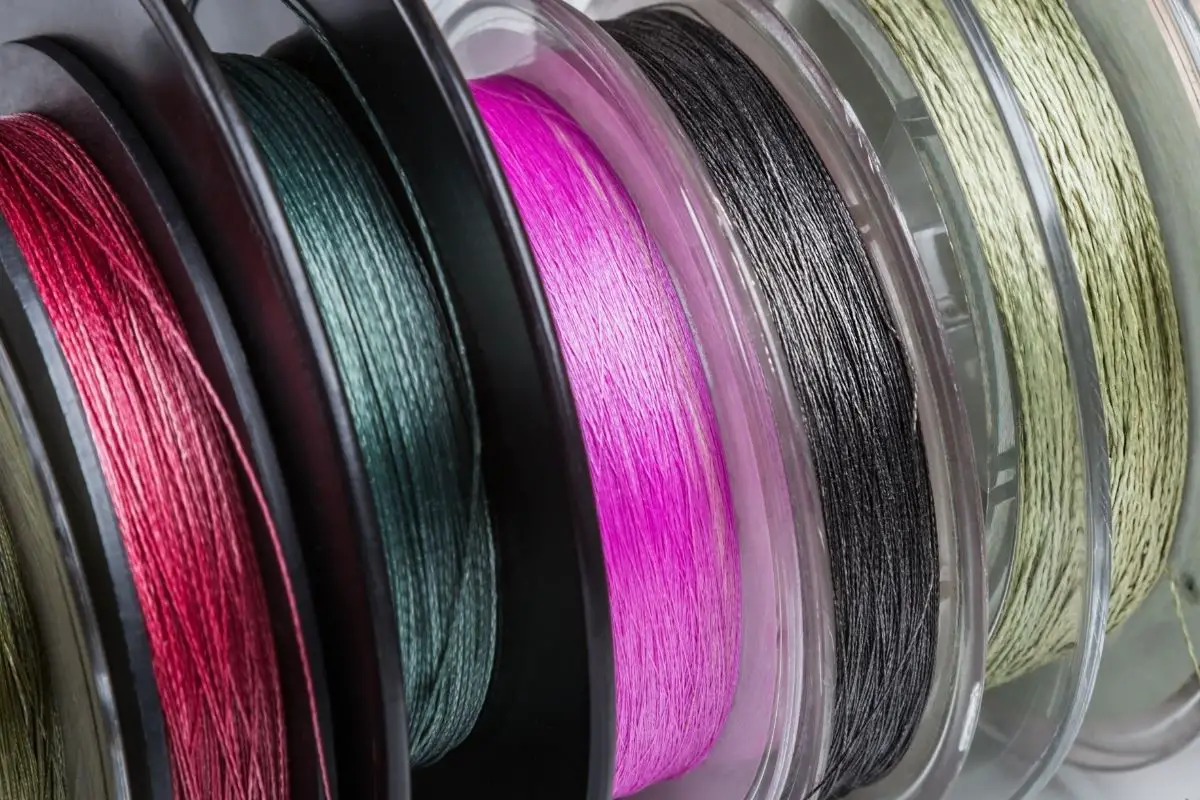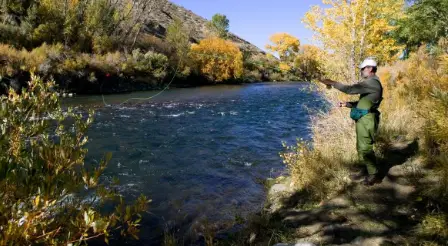If you want to go fishing then learning how to connect two fishing lines together is one of the most essential things you need to know.
If you are a beginner angler then there is no better time to learn this than now, but even seasoned anglers won’t know the basics of tying two fishing lines together.
How To Connect Two Fishing Lines?
Fishing Knots are used to connect two lines together. There are many different types of knots that can be used depending on your needs.
Some knots are stronger than others, but all are useful when tying up a line. Here are some of the most common ones.
Albrighat Knot
Learning how to tie a fishing line together can be difficult if you’re using two different kinds of lines. A simple knot called an Albright Knot works well for this purpose.
First, take the smaller line and make a loop in the larger line. Then pass the end of the smaller line through the loop and pull the ends tight. Repeat this process until you’ve tied enough knots to secure the line.
Blood Knot
Blood knots are very strong, but they’re hard to tie. You need to be careful when you’re doing this because if you mess up, your line could break. To make sure you get it right, follow these 3 easy steps.
First, overlap the lines, putting the working ends opposite each other. Then wrap one line around the other 5 times, bringing the tag end back and then tucking it between the two lines again.
Finally, do the same with the other line. Pull the lines in opposite directions until the knot is tight.
Double Uni Knot
A uni-to-uni knot is a very simple knot that is used to join two different-sized lines together. To create this knot, you need to start with two lines that are about the same size.
You then take each of those lines and wrap them around each other.
Then you do the same thing again, but this time you wrap them in the opposite direction. Once you’ve done this enough times, you’ll have created a double overhand knot.
Surgeon’s Knot
A surgeon’s knot is a strong knot used to join ropes of equal diameter. This method is easy to master and requires minimal equipment.
It is also relatively simple to create. Two lines are overlapped and passed through the loop twice. The working end and the entire rope are pulled tight.
J Knot
A double uni knot is a very secure knot for attaching leaders to tippets. To start, overlap the ends of the two pieces of the line by several inches, then make a loop by tying an overhand knot. Pull the entire leader through the loop.
Weave the leader end through both loops by running the line and leader over and around them twice. Finally, moisten the lines and pull the knot tight.
What Type Of Fishing Line Is Right for You?

Tyger Leader is reader-supported and may earn a commission when you book or purchase using our links. Learn more about our affiliate disclaimer here.
There are many different kinds of fishing lines. Some are better suited to certain types of knots. Knowing what kind of knot you need can help you choose the right fishing line.
Braided Fishing Line
Braided line is stronger than the monofilament line, but it is more difficult to tie knots in. It is also slippery, so it isn’t visible in the water.
Braided lines do not hold knots very well, and they are not as strong as monofilament lines either.
Monofilament Line
Monofilament lines are very common and cheap. It is used for many things such as fishing, tying knots, and making nets. It is not as strong as some other types of fishing line, and it breaks down when exposed to sunlight.
Wire Fishing Line
Wire fishing line is often used when you are facing strong currents because it is heavier and thinner. Mono and braided lines are lighter and thicker, but they are more resistant to passing water.
Wire fishing line is one of your best options if you’re trolling.
Fluorocarbon Fishing Line
The Mono Line is the strongest type of fishing line because it stretches more than any other kind of line. It is usually made out of nylon or polyester.
It is very strong and durable. It is also very expensive.
Braid Line is the second strongest type of how to connect two fishing lines. It is made up of many strands of monofilament that are twisted together.
This makes it stronger than the monoline but less flexible. Braided lines are cheaper than monolines.
What Is The Strongest Line-to-line Knot?
A surgeon’s knot is the most commonly used knot for tying a line to another line. It is easy to tie, and it is very strong.
When you make a double surgeon’s knot (which is two loops), then it becomes even stronger. More twists mean a stronger knot.
What Is The Most Difficult Knot To Tie?
Fishermen’s knots are also known as ‘impossible knots’ because they are quite hard to tie and are known throughout the angler community as such.
However, like all knots, if you can learn to tie it properly then with enough practice even an impossible knot can become easy to tie.
What Is A Leader Line?
A leader line is used to attach a secondary line to your mainline. You can tie a knot in this line to make it stronger than the mainline.
Leader lines are commonly used by fly fishermen because they help disguise the fly line. Fly fishing leaders are often made out of nylon.
Using a leader line is a great idea, even if you’re using a braided line. A leader line helps your line sink, saves line, and makes your cast longer.
Final Thoughts
Learning how to tie two fishing lines together will save you from having to buy new ones every time you get into the water.
Learning how to tie two fishing lines together may seem daunting at first, but once you have mastered the technique, you’ll be able to tie almost any knot without thinking about it!



